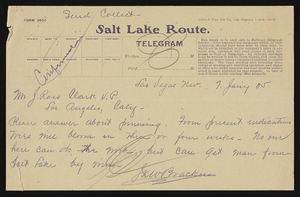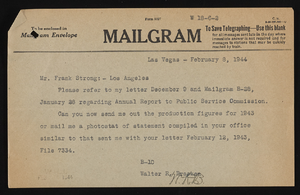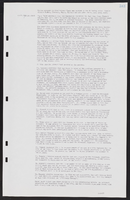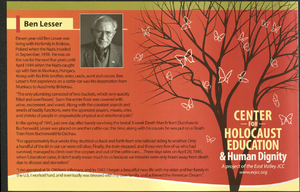Search the Special Collections and Archives Portal
Search Results
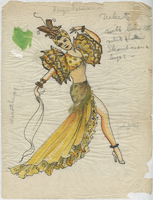
Costume design drawing, yellow calypso costume, circa 1945-1955
Date
Archival Collection
Description
Performance Name: Virgin Islands
Image

Jill Roberts oral history interview: transcript
Date
Archival Collection
Description
Oral history interview with Jill Roberts conducted by Barbara Tabach and Claytee D. White on March 20, 2018 for the Remembering 1 October Oral History Project. In this interview, Jill Roberts discusses her position as the CEO of the Trauma Intervention Program (TIP) of Southern Nevada. She also delves into her part-time work at the coroner's office as a death investigator and discusses her personal background in Las Vegas, Nevada after she moved to the city in 1977. She describes the role TIP had during the aftermath of the October 1, 2017 mass shooting, where well-trained volunteers were dispatched to hotels, hospitals, and anywhere else the survivors reached in order to provide emotional and practical support. Throughout the interview, Roberts emphasizes that the assistance provided to those in a traumatic event depends on each individual's needs. She shares a few examples of what the TIP volunteers had helped with after the shooting, including listening to the survivors' stories as well as providing information on the situation, helping separated loved ones find each other, arranging travel for some survivors to go back to their homes, and procuring clothes and shoes for those who needed them. Roberts also discusses the gratitude TIP had received after the shooting, including the thank you cards sent by Sandy Hook High School.
Text

Transcript of interview with Gladys Neville by JoAnn Bingham, June 2, 2004
Date
Description
Text

Biographical essay by Claude Black, 2014
Date
Archival Collection
Description
Claude Black describes his family's escape from Germany to Santiago, Chile, and eventually settling in Chicago, Illinois. The essay is illustrated with images of his family and documents from their journey.
Text
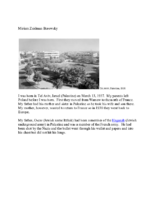
Biographical essay by Miriam Zaidman Borowsky, 2014
Date
Archival Collection
Description
Miriam Ziadman Borowsky's family moved from Palenstine to France in 1938, where her father surrendered to the Nazis and was sent to the Drancy internment camp. She recounts the rift in her family after she realized her father was not returning. Her essay includes photographs of her family and documents related to her father's military career.
Text

